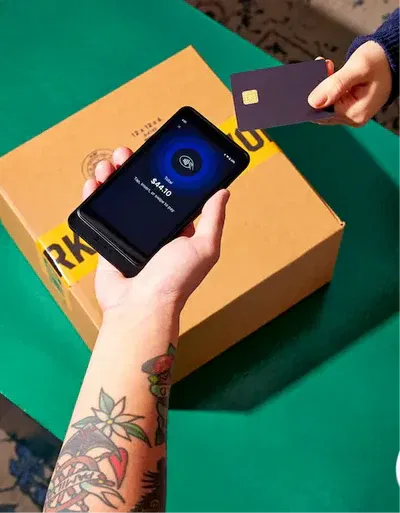How to Use a Web Page Content Template to Write High-Converting Copy
The Ultimate Guide to Crafting the Perfect Web Page Content Template (With 10 Proven Examples)
Ever landed on a website and felt instantly engaged, guided, and ready to take action? That wasn’t a fluke. It was likely the result of a well-structured web page content template.
Whether you’re a digital marketer, small business owner, content creator, or freelance designer, you need a system for creating consistent, goal-driven, and user-friendly content.
In this comprehensive guide, I’ll walk you through everything you need to know about creating an effective web page content template. You’ll get real-life examples, expert-backed tips, and fully editable structures you can plug and play on your own site. Let’s simplify the chaos of content creation.
| Template Type | Best For | Main Content Elements | Includes CTA? | SEO Optimized? |
|---|---|---|---|---|
| Homepage | Brand introduction & overview | H1 with brand pitch, benefits list, testimonials, intro video, main CTA | ✅ Yes | ✅ Yes |
| About Page | Brand story & values | Mission statement, team bios, timeline, company values, soft CTA | ✅ Yes (soft) | ✅ Yes |
| Service Page | Showcasing specific services | Problem-solution intro, feature list, pricing, testimonial, CTA to contact | ✅ Yes | ✅ Yes |
| Product Page | Selling a product | Product overview, features table, comparison chart, FAQs, “Buy Now” CTA | ✅ Yes | ✅ Yes |
| Landing Page | Promotions / lead gen | Hook headline, urgency subhead, bullet points, social proof, above-the-fold form/CTA | ✅ Yes | ✅ Yes |
| Blog Post | Education / content marketing | SEO-rich title, intro paragraph, subheadings, bullets, conclusion CTA | ✅ Optional | ✅ Yes |
| Contact Page | Getting in touch | Welcome text, form, map embed, phone/email, social media buttons | ✅ Yes | ✅ Yes |
| FAQ Page | Answering common questions | Intro paragraph, accordion-style FAQ list, internal links to support or services | ✅ Optional | ✅ Yes |
| Testimonial Page | Social proof | Client reviews, star ratings, client logos, video snippets, link to case studies | ✅ Yes | ✅ Yes |
| 404 Page | Lost users / redirection | Friendly error message, search bar, navigation links, CTA to homepage | ✅ Yes | ✅ Yes |
What is a Web Page Content Template?
A web page content template is a pre-defined structure for organizing text, media, and other elements on a web page. Think of it as the content blueprint that ensures your website maintains:
- Consistent messaging
- Optimal flow for user experience
- Clear calls to action (CTAs)
- SEO best practices
Unlike visual layout templates that define design components, a web content template focuses on the actual wording, hierarchy, and purpose of the copy you place on each page.
Why You Need a Web Page Content Template
Using a website content template saves you time, improves collaboration between content and design teams, and ensures every page is optimized for both conversions and search engines.
Benefits include:
- Faster production cycles
- Brand voice consistency
- Improved SEO performance
- Higher conversion rates
- Easier scaling and onboarding for teams
Anatomy of a High-Performing Web Page Content Template
Here’s what a solid web page content template typically includes:
- Headline
- Hooks reader and includes a primary keyword
- Subheadline
- Adds context or emotional trigger
- Intro Paragraph
- Tells readers what they’ll get
- Main Content Sections
- Includes key info, benefits, visuals, or statistics
- Testimonials / Social Proof
- Builds trust
- Call-to-Action (CTA)
- Directs users to the next step
- SEO Elements
- Proper heading tags, internal links, and meta suggestions
10 Proven Web Page Content Template Examples (Use These Today)
Each template is built to meet a unique goal. Use or adapt them based on your site’s needs.
1. Homepage Template
- H1: What Your Brand Does (Keyword Included)
- H2: What Makes You Different?
- 3-4 Benefit Bullets
- Customer Testimonials
- Primary CTA (e.g., Get Started, Book a Demo)
Main Keyword Used: web page content template
2. About Page Template
- Hero Statement: Who You Are
- Mission Statement or Timeline
- Meet the Team (Short Bios)
- Brand Values
- Subtle CTA (e.g., Work With Us)
3. Service Page Template
- H1: Specific Service Name (with web content template keyword)
- Quick Summary (Problem + Solution)
- Feature/Benefit Breakdown (3-6 points)
- Case Study or Testimonial
- CTA to Contact or Schedule
4. Product Page Template
- H1: Product Name
- Product Overview
- Key Features Table
- Comparison Chart (optional)
- FAQ Section
- Buy Now CTA
5. Landing Page Template
- Hook Headline
- Urgency Subhead (e.g., Limited Offer)
- Bullet Benefits
- Form or CTA Button (above the fold)
- Trust Badges / Security Info
6. Blog Post Template
- Title (with main keyword)
- Intro (pain point + solution teaser)
- Subheadings (with secondary keywords)
- Bullet Lists, Examples, or Quotes
- Conclusion with CTA (comment/share or link)
7. Contact Page Template
- Short Welcome Message
- Embedded Contact Form
- Direct Contact Info (phone/email)
- Map Embed (for local SEO)
- Social Links
8. FAQ Page Template
- Intro paragraph (include keyword)
- Accordion-Style FAQs (8-10)
- Link to Customer Support Page
9. Testimonial Page Template
- H1: What Our Clients Say
- Video or Text Testimonials
- Client Logos
- CTA: Read Case Studies or Work With Us
10. 404 Error Page Template
- Oops Message (funny or friendly)
- Suggested Links or Navigation
- Search Box
- CTA: Go Back to Homepage
Web Page Content Template vs. Website Content Template
Although often used interchangeably, a web page content template refers to the structure for a single page (e.g., homepage, service page), while a website content template covers the content framework across your entire website.
For example:
- Web Page Content Template: Used for building a focused, high-conversion landing page
- Website Content Template: Used to map out content across all pages (homepage, about, services, blog, etc.)
Both are necessary for a scalable, SEO-friendly site.
SEO Tips for Using a Web Page Content Template
- Include Primary Keyword Early: Use “web page content template” within the first 100 words
- Use H1 for Primary Keyword
- Add Secondary Keywords: “website content template” and “web content template”
- Internal Links: Link to related blogs or product pages
- Meta Tags: Each template should include meta title and meta description guidelines
- Alt Text for Images: Insert “Insert image of web page structure with labeled sections”
Table: Comparison of 3 Web Page Content Templates
| Template Type | Best For | Primary Focus | Includes CTA? | SEO Friendly? |
|---|---|---|---|---|
| Homepage | Brand Overviews | Benefits & Trust | Yes | Yes |
| Landing Page | Campaigns & Offers | Lead Generation | Yes | Yes |
| Blog Post | Education & Traffic | Keyword Optimization | Optional | Yes |
How to Build a Custom Web Page Content Template (Step-by-Step)
- Define Page Goal
- Awareness? Conversion? Trust?
- Identify Target Keyword
- e.g., “web page content template”
- Outline Key Sections
- Intro > Body > CTA
- Add SEO Elements
- H1, Meta, Internal Links
- Draft Initial Copy
- Use conversational tone
- Add Visual Cues
- Tables, images, icons
- Test & Iterate
- A/B test headlines and CTAs
🔍 Top 15 Frequently Asked Questions About Web Page Content Templates
1. What is a web page content template, and why should I use one?
A web page content template is a structured outline used to plan, create, and organize the textual content of a web page. It helps ensure consistency, clarity, and SEO optimization across your site. Whether you’re working on a homepage, service page, or blog post, a good template gives you a repeatable system for delivering high-quality, high-converting content.
Using a web page content template saves time, improves collaboration between designers and writers, and ensures all your pages follow a content strategy aligned with your business goals.
2. How is a web page content template different from a website content template?
Great question! A web page content template focuses on the structure and wording of a single web page—like a landing page, product page, or contact page. It outlines elements like:
-
Headlines
-
Subheadlines
-
Paragraph flow
-
CTAs
-
SEO structure (headings, keywords)
On the other hand, a website content template provides a broader content plan for an entire website. It includes guidelines for multiple pages and how they interconnect, often acting as a content map or editorial calendar.
3. Are web page content templates important for SEO?
Absolutely. A well-structured web page content template is one of the most underrated SEO tools. Here’s how it helps:
-
Ensures proper use of H1, H2, H3 tags
-
Encourages keyword placement in headlines and early paragraphs
-
Guides internal linking strategies
-
Maintains consistent formatting and meta data
In short, every time you use a web content template, you’re setting yourself up for better visibility in search engine results.
4. What should be included in a good web page content template?
Every strong web page content template should include:
-
An attention-grabbing headline (with keyword)
-
A value-driven subheadline
-
A compelling intro paragraph
-
Benefit-driven sections with bullet points or visuals
-
A persuasive call-to-action (CTA)
-
Optional: Testimonials, FAQs, or stats
-
SEO guidance: meta title, meta description, target keywords
These elements help structure the page so it flows naturally, keeps readers engaged, and encourages action.
5. Can I use the same web page content template for different industries?
Yes—and no. While the core structure of a web page content template (intro, benefits, CTA) remains consistent across industries, you’ll want to adjust:
-
Tone of voice
-
Examples and case studies
-
Industry-specific terminology
-
Compliance or trust signals (e.g., certifications, legal language)
You can use one website content template as a base and then tailor it to match the audience and goals of each niche you serve.
6. How do I create a web page content template from scratch?
Here’s a step-by-step to build your own web page content template:
-
Define your page’s goal (conversion, education, awareness)
-
Choose a primary keyword
-
Write a compelling headline
-
Add a subheadline that explains value
-
Structure your content into sections
-
Add visuals and CTAs
-
Include SEO elements like meta tags and keyword frequency
-
Review readability and flow
Document this in a repeatable format and you’ve created your first web content template.
7. Are there tools that can help me generate web page content templates?
Yes. If you’re not building a web page content template manually, tools like the following can help:
-
HubSpot Content Strategy Tool
-
Jasper.ai (formerly Jarvis)
-
Notion or Trello for template organization
-
Google Docs with reusable outlines
-
SurferSEO for on-page SEO structuring
You can also download free website content template packs from platforms like Canva or ContentSnare.
8. What types of web pages benefit most from content templates?
The truth is—every type of page benefits. But here are some that absolutely require a solid web page content template:
-
Homepages: Needs clear branding and CTA
-
Landing Pages: Built to convert leads or sales
-
Service Pages: Must convey features and benefits quickly
-
Product Pages: Detail-rich with visuals and FAQs
-
About Pages: Build trust with storytelling
-
Contact Pages: Streamlined user interaction
Having a dedicated web content template for each ensures you never miss an important section.
9. Can I use a web page content template for eCommerce product pages?
Yes, and you should. A well-designed web page content template for a product page typically includes:
-
Product name and keyword-optimized H1
-
Benefit-oriented product description
-
Feature list (bullets)
-
Technical specs
-
Social proof (reviews/testimonials)
-
Call to action (Buy Now, Add to Cart)
-
SEO elements: title tag, meta description, schema markup
Using a web content template ensures consistency across hundreds of SKUs and improves both UX and SEO.
10. How do I integrate a web page content template into my content workflow?
Here’s how to embed a web page content template into your process:
-
Step 1: Store it in a shared folder or CMS (e.g., Notion, Google Docs)
-
Step 2: Use it during brainstorming or content briefs
-
Step 3: Assign sections to writers or designers
-
Step 4: Review using the structure for consistency
-
Step 5: Track conversion or SEO performance to optimize
This system turns your website content template into a scalable framework, especially useful for content teams or agencies.
11. Should every page have a unique web page content template?
Not necessarily. Many pages can share the same web page content template, especially if they serve similar goals (e.g., multiple service pages). However, critical pages like your homepage, landing pages, and high-traffic blog posts should have tailored templates for maximum impact.
For example, while your “SEO Services” and “Web Design Services” may share a website content template, your homepage or pricing page will need its own layout and flow.
12. Can a web content template improve conversions?
Yes. A strong web content template helps guide users through a narrative journey that leads to action. With elements like trust indicators, benefit sections, and bold CTAs, you increase:
-
Time on page
-
Scroll depth
-
Form submissions
-
Click-throughs
-
Sales and inquiries
Templates reduce friction and cognitive overload, two common conversion killers.
13. How many keywords should I use in a web page content template?
It’s quality over quantity. For any web page content template, stick to:
-
Primary Keyword: Use 30+ times if your content is 2,500+ words (e.g., “web page content template”)
-
2-3 Secondary Keywords: Like “website content template” and “web content template”
-
Keyword Placement: In title, first 100 words, subheadings, meta tags, image alt text
Avoid keyword stuffing and focus on natural integration for better SEO performance.
14. Can I download pre-made web page content templates?
Yes. Many sites offer free and premium web page content template downloads. Look for options on:
-
HubSpot
-
SEMrush
-
ContentSnare
-
Notion template galleries
-
Envato Elements
You can even find editable website content templates in Google Docs or Microsoft Word formats. Just make sure they’re customizable to fit your brand voice and SEO needs.
15. What’s the biggest mistake to avoid when using a web page content template?
The #1 mistake? Treating it like a fill-in-the-blank form.
While a web page content template provides structure, it’s up to you to infuse it with:
-
Authenticity
-
Persuasive writing
-
Customer empathy
-
SEO strategy
Templates should guide—not restrict—your creativity. Use them as blueprints, not paint-by-number solutions.
Final Thoughts
Creating an effective web page content template isn’t just for large design teams—it’s an essential tool for solopreneurs, marketers, and growing businesses alike.
With the right structure, your message becomes clearer, your SEO improves, and your users are more likely to take action. By using the examples and tips in this guide, you can start building high-converting, professionally written web pages without reinventing the wheel every time.
Whether you’re optimizing a web content template or building a full website content template, your strategy should always start with purpose, clarity, and structure.
Try creating your own web page content template today—and watch your engagement, SEO, and conversions rise.




